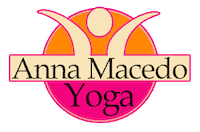Skip to content
Yoga for healthy hips
- I hope these points will help to explain how we work carefully in Iyengar Yoga for healthy hips
- If the thigh bone (femur) doesn’t sit right in its ball and socket joint, it can pinch or ‘impinge’
- If we perform repetitive movements without certain understanding we can damage ourselves
- For the healthy action in Yoga classes we want to keep the femur head in its correct place
- We do this in different ways- in standing poses we start by consciously spreading the soles of the feet
- Then we align the ankles so they stay in a neutral position (not drooping in or bulging out)
- Sitting with soles of the feet together- spread the knees wide- as you spread the knees wider you may feel you are gripping the back of the hip- this helps with hip pain
- The Gluteus Medius muscles around the sides of the buttocks can then firm around the hip area
- The above points can help us learn how to ‘grip the hips’- one of the actions required for healthy hips
- This is not an aggressive action, when standing I see it as drawing up the thigh muscles and firming them around the sides of the pelvis rather than just overworking the gluteus maximus (if we were just to clench the buttocks). Try standing in Tadasana (mountain pose) and squeezing a yoga block between the thighs.
- I have noticed that students with very flexible bodies often struggle to firm the muscles, so they compensate by overworking the joints – which will eventually lead to wear and tear on those joints
- A belt (or two) can be tied tightly around the hips to create the sensation of firmness around the entire pelvis
- So, in Trikonasana (triangle pose) on the front leg try following these tips:
- Spread the soles of the feet and press the ball of the big toe strongly into the floor
- In Trikonasana (triangle pose) Try tucking the front leg buttock bone in and under, then feel the femur head moving in deeper into the hip socket, the hip socket can then descend onto the femur head
- Allow the back leg to bend slightly: then pull the femur head deep into the hip socket, and feel the outer hip muscles firm up as you mindfully straighten the leg
- Also feel the back leg outer knee rolling back to help engage hip flexors
- If you’re lucky you should feel as if the two hip sockets are moving to come closer to each other- sometimes called ‘gripping the hips’
- In standing poses the outer hip (eg. the back leg hip in Trikonasana) needs to retain its ‘dimple’- this may mean not going as far into the pose as you would like to.
- Once the outer hips feel more ‘compact’ then the entire spine is able to lengthen- a wonderful healthy sensation!
- So that’s what I mean when I ask my students in class to ‘grip the hips’ or to ‘firm the hips’ or to’ gather the hips’ : just to keep the femur heads in their rightful healthy place, as best we can.
- Working like this can really deepen our understanding of poses while improving pelvic and back pain
- Students have avoided hip surgery by working with these methods- it may be necessary to work one to one for more serious cases
- You can book for my Iyengar Yoga classes via my classes page: http://annamacedoyoga.com/yoga-classes/
- ‘Yoga for healthy hips’: what does it mean in Iyengar Yoga?
- If you’ve realised your Yoga teacher does not have the anatomical knowledge required to help you, then you can find your nearest Iyengar Yoga teacher here: https://iyengaryoga.org.uk/
Anna Macedo2019-03-18T18:51:52+00:00
Page load link
